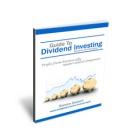In the Guide to Dividend Investing, we dedicate a whole chapter to the benefits of pound-cost averaging. In general, I believe averaging-down is an important tool when building up a share portfolio if (regular) cash is available.
What is pound-cost averaging?
With pound-cost averaging you normally buy equal pound amounts of the same investment on a predetermined time schedule. Automatic dividend reinvestment is another way to get the ‘magic’ of pound cost averaging happening, this time without investing more money.
The reinvested dividends will purchase additional shares, lowering the average cost per share, but, of course, only if the reinvested dividends are invested in the same company at a share price below the original purchase price.
What are the benefits of averaging down?
Let’s say you’ve decided to invest in a specific company. Rather than purchasing the shares at any one time using the entire amount, you decide to regularly purchase shares on a certain day, each month, for a number of months. You may ask yourself what the benefit is of such a strategy. For one, it very much removes much of the emotion from the whole investing process. Once set up, it happens automatically. Remember human nature is often the worst enemy when investing. Over any period of time a company’s share price is likely to vary substantially. Suppose you set up your own monthly purchasing program. You will buy fewer shares when the share price is high, but when the share price is lower, you will buy more shares.
An example
In the Guide to Dividend Investing - Click Here for a look inside - we have used prolific dividend payer British American Tobacco Plc (“BATS”) as an example to show the benefits of pound-cost averaging. In the Guide, our hypothetical investor started buying BATS shares every month, starting on June 2nd 2008, for a period of 15 months, spending £1000 per purchase. As expected, our hypothetical investor £1,000 bought more shares of BATS during the stock market’s decline (April – June 2009) and fewer shares when prices were higher, in fact 61 shares would have been bought, each in April and May 2009 (at £16.28 and £16.48 per share, respectively), when share prices were low, whilst only 52 shares would have been bought in September 2008 and February 2009 (£19.11 and £19.20), when share prices were higher.
The end result of our investor’s buying…




